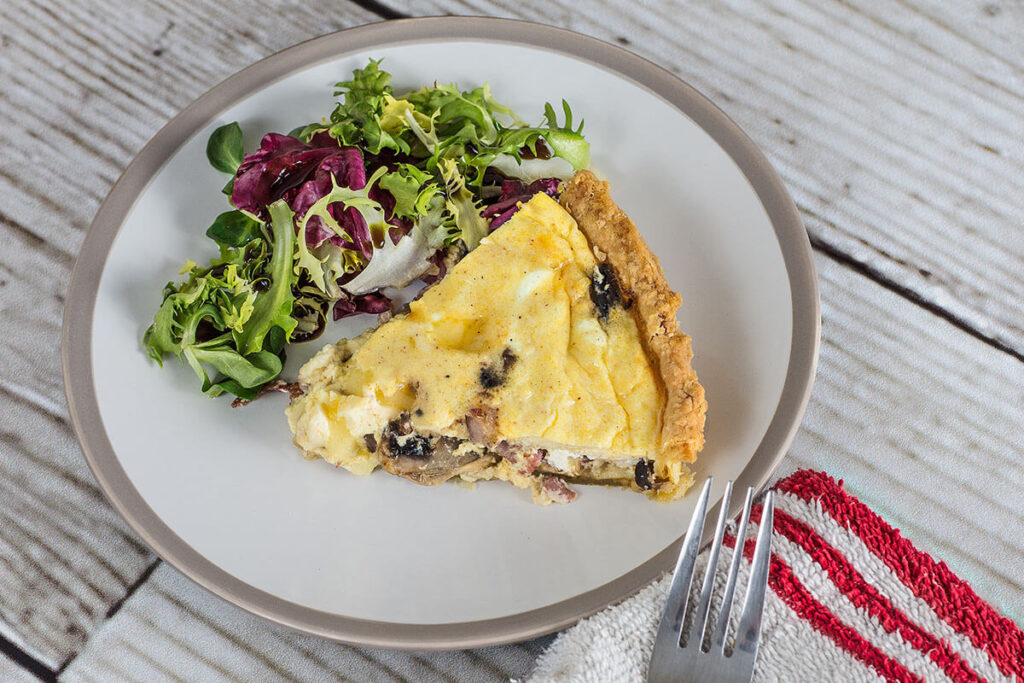Ingredients
- 500g Pork Mince
- 500g Beef Mince
- 250g Smoked Panetta / Bacon Lardons
- 1 Glass of Red Wine
- 300ml Beef Stock
- 1 Tbsp Tomato Puree
- 1 tsp Oregano
- 4 Cloves Garlic
- 1 Large Carrot
- 1 Large Celery Stick
- 1 tsp Sugar
- 1 Bay Leaf
- 600ml Milk
- 500g Passata
- 60g Butter
- 50g Plain Flour
- Half a Bunch of Fresh Basil
- 100g Parmesan
- Olive Oil
- 1 Box Lasagne Sheets or Fresh
- Freshly Ground Black Pepper
- Salt
Method
- Start by very finely dicing the carrot, celery and garlic.
- Add 10g of the butter and 1 Tbsp olive oil to a large saucepan on medium heat.
- When hot add the carrot and celery and saute until softened, approx 5 minutes.
- Add garlic and pancetta, and saute until the fat has rendered from the pancetta and has become crispy on the outside, keep stirring constantly and DO NOT BURN THE GARLIC.
- Add the pork and beef mince, turn the heat to high, and constantly stir until most of the meat has been caramelised. At this point, if you have what you believe to be a huge excess of rendered fat from the meat (this will depend on what percentage of fat is in your meat) you may want to scoop some of this out using a spoon.
- Make a well in the pan and add the wine, cook off the alcohol (2 mins approx) then add the tomato puree, oregano and sugar and cook for another 2 minutes, constantly stirring.
- Add passata, half the beef stock and a quarter of a bunch of basil (whole, including stems) Turn down to medium-low heat, put the pan lid on and cook for 20 minutes, stirring occasionally.
- After 20 minutes, taste the seasoning. If it needs more then add more of the stock but bare in mind that when the sauce thickens, the seasoning will become more concentrated so use it cautiously. You shouldn’t need to add additional salt as the beef stock and the pancetta should provide all the seasoning you need.
- Put the pan lid on and cook for another 10 minutes or so, until the sauce thickens.
- Add half a cup of milk to the sauce and cook for another 10 minutes. When the sauce is cooked, put the lid on and set it to the side.
- To make the white sauce add 50g of butter to a saucepan on medium-low heat.
- Once there butter has melted, add the flour and mix with a wooden spoon until a sandy substance forms, keep cooking and stirring until it becomes golden brown, this is your roux.
- Once the roux has become golden brown then you can start adding the milk bit by bit, constantly whisking, once you have added all of the milk and you have a smooth mixture then add the bay leaf, a few grinds of freshly ground black pepper and simmer on low heat for around 5-7 minutes but keep whisking until finished, season to taste.
- Once your sauce is cooked then remove the bay leaf and set aside.
- Get a casserole dish and put a layer of tomato sauce at the bottom followed by generous drizzles of the white sauce, a couple of grating of parmesan cheese and finally the lasagne sheets on top trying to cover as much surface area as you can, try not to massively overlap the sheets.
- Repeat this process until you have the last dollop of each sauce left. put both sauces over the top of the last layer of lasagne sheets and smooth out over the top, easily covering the entire top layer of pasta sheets. Grate the last of the parmesan over the top of the lasagne, leaving a little for serving later.
- Put the lasagne into a preheated 180°C / 160 °C Fan / 350 F oven for 45 minutes.
- Take the lasagne out of the oven and use a knife to cut around the perimeter of the casserole dish to release the pasta sheets stuck to the dish and then cut them into your serving portions.
- Plate the lasagne with freshly ground black pepper, chiffonade of basil leaves, a grating of parmesan and a drizzle of extra virgin olive oil.
- This dish is great served with a balsamic and dijon dressed rocket salad and goose fat roasted thick-cut chips.
